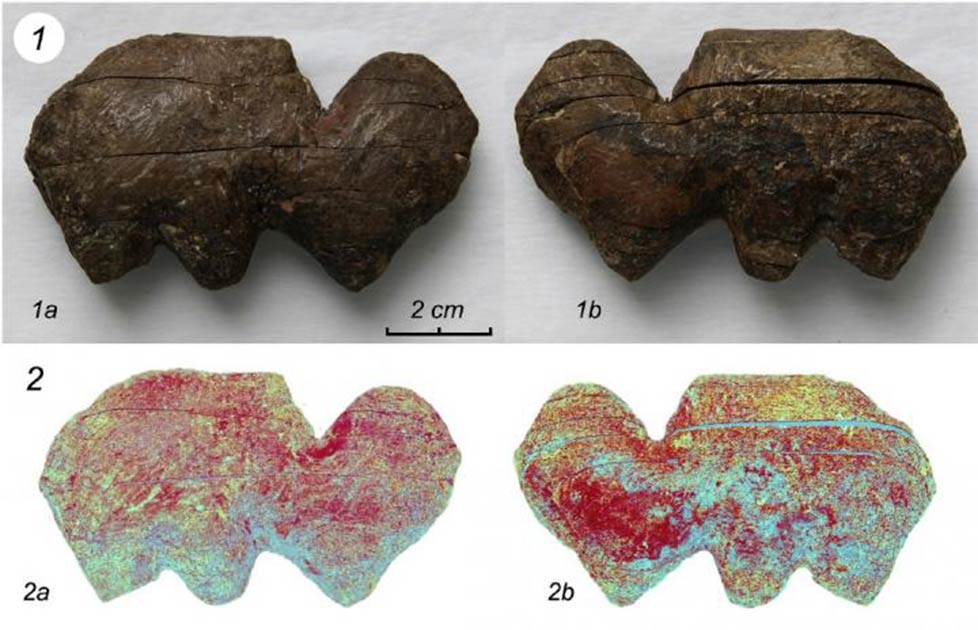Ancient Siberian Carved Mammoth Ivory Yields Amazing New Information!
A team of Siberian archaeologists has studied a collection of 24,000-year-old mammoth ivory revealing hitherto unknown secrets of ancient craft technologies. The year 2020 has produced a number of incredible scientific papers about ancient mammoths and their interactions with early humans. Topics covered in these papers include the oldest mammoth traps ever discovered in Mexico, dating back 12,000 years, and mammoth huts in Russia dating back more than 25,000 years. And now, a team of researchers from the Siberian Federal University and Novosibirsk State University have published their detailed reconstruction of a carved mammoth ivory technique that was used to carve ornaments and sculptures dating back more than 24,000 years. Carved mammoth ivory is not unusual but understanding how and why they were carved has never been easy.
Hand-Crafted Carved Mammoth Ivory From A Lost World
A string of beads and an ancient figurine made from mammoth ivory were discovered at the Paleolithic site of Ust-Kova, in the Kezhemsky District of Siberia, at the mouth of the Kova River. These artifacts prove that Paleolithic people made and used “drills, cutters, and even leveling blades” 20,000 years ago. And according to the scientists’ recent article, published in the journal Archaeological Research in Asia, the new data obtained will help us better understand the relations between the early hunters of different Siberian territories.

Fossil mammoth tusk used as an anvil and workbench found in Siberia, from the middle Paleolithic period (Wolfgang Sauber / CC BY-SA 3.0)
The archaeologists from Krasnoyarsk have been excavating this site since the mid-1950s and based on radiocarbon dating results they have determined that the site was occupied over 20,000 years ago. While various ornaments and tools made from mammoth ivory have been recovered, until now, the technologies used to manufacture them were unknown. Prof. Nikolay Drozdov of the Siberian Federal University told Science Mag that his team studied “a mammoth figurine, a seal sculpture, and bracelets and beads of different sizes that were created around 24 thousand years ago.”

A selection of beads and carved mammoth ivory pieces found at the site in Siberia. (Archaeological Research in Asia)
A detailed microscopic analysis of each object identified the marks left by production tools. Using these images, the team was able to reconstruct the ancient technology used to make them. The paper also demonstrates that the craftsperson’s first step was to break a mammoth tusk into segments before smaller pieces were turned into beads. And to make these beads the master mammoth carver had to cut them into rectangles and bore holes in the center of each piece with a stone drill.
Mammoth Ivory Crafts Were Colored With A Dark-Red Color
Larger mammoth ivory fragments were used to create smaller animal sculptures. But to create the solid mammoth ivory figurine the craftsman had to first outline its head and legs with a leveling blade before removing the excess bone with a cutting tool. And after the body of the figurine was completed it was decorated with a pattern to give the effect of eyes and hair.
The scientists also studied traces of an unknown dark-red pigment that was found on the sculptured mammoth ivory pieces. Chemical analysis revealed that these ancient craftspeople made paint from a mixture of “manganese and magnesium.” The scientists believe this mineral pigment was extracted from salt found on rocks near the site.

Engraving of a mammoth on a slab of mammoth ivory, from the Upper Paleolithic Mal'ta deposits at Lake Baikal, Siberia (José-Manuel Benito / Public domain)
Symbolic Colors From 24,000-Years-Ago?
One of theories explored in the new paper is that mammoth ivory figurine was painted symbolically with a red pigment on one side and black pigment on the reverse side. This points to the mythologies of the much-later Ust-Kova people of this region, who believed that the color red represents life while black means death. However, for this theory to be true the meaning of these two colors would have to have remained unchanged for more than 24,000 years.
- 50,000-year-old Siberian bones may be the ‘oldest Homo sapiens' outside Africa and Middle East
- Oldest Paleolithic Rock Art in Siberia May Be More Ancient than Previously Believed
- 15,000-Year-Old Paleolithic Rock Art Gallery Identified On Russian Border
At the end of their research paper, the scientists concluded that the mammoth ivory ornaments had been in use for many years and that they had been repaired regularly. This strongly suggests these ornaments were special to the ancient hunters who made them. The new study is also expected to help anthropologists better understand the complex relationships between different tribes and their ancestral territories. This would be possible from a comparative analysis of carved mammoth ivory samples from different sites. With this kind of data scientists will eventually be able to determine whether hunting tribes residing in different territories were in contact with each other. Furthermore, this kind of research may one day help to identify individual craft styles and tool types of master mammoth ivory carvers from so long ago.
Top image: Pieces of the carved mammoth ivory from Siberia analyzed to determine production method. Source: Archaeological Research in Asia
By Ashley Cowie




















Comments
The two-tone elephant was likely a game piece.